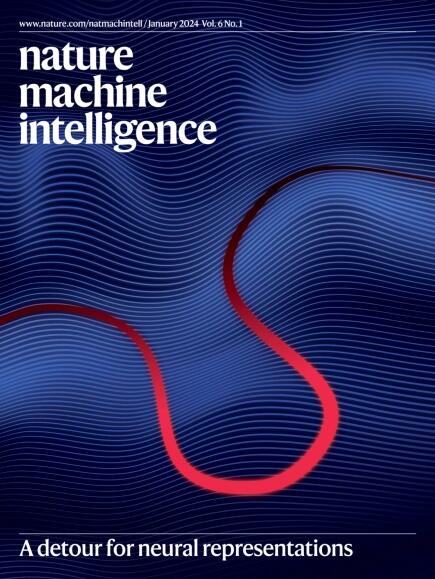Optimal transport for generating transition states in chemical reactions
IF 23.9
1区 计算机科学
Q1 COMPUTER SCIENCE, ARTIFICIAL INTELLIGENCE
引用次数: 0
Abstract
Transition states (TSs) are transient structures that are key to understanding reaction mechanisms and designing catalysts but challenging to capture in experiments. Many optimization algorithms have been developed to search for TSs computationally. Yet, the cost of these algorithms driven by quantum chemistry methods (usually density functional theory) is still high, posing challenges for their applications in building large reaction networks for reaction exploration. Here we developed React-OT, an optimal transport approach for generating unique TS structures from reactants and products. React-OT generates highly accurate TS structures with a median structural root mean square deviation of 0.053 Å and median barrier height error of 1.06 kcal mol−1 requiring only 0.4 s per reaction. The root mean square deviation and barrier height error are further improved by roughly 25% through pretraining React-OT on a large reaction dataset obtained with a lower level of theory, GFN2-xTB. We envision that the remarkable accuracy and rapid inference of React-OT will be highly useful when integrated with the current high-throughput TS search workflow. This integration will facilitate the exploration of chemical reactions with unknown mechanisms. Duan et al. introduce an optimal transport approach to generate transition states, surpassing diffusion models in precision and speed. This method can facilitate the study of chemical reactions with unknown mechanisms.


化学反应中产生过渡态的最佳输运
过渡态是一种暂态结构,是理解反应机理和设计催化剂的关键,但在实验中很难捕获。已经开发了许多优化算法来计算搜索TSs。然而,这些由量子化学方法(通常是密度泛函理论)驱动的算法的成本仍然很高,这对它们在构建大型反应网络以进行反应探索方面的应用提出了挑战。在这里,我们开发了React-OT,这是一种从反应物和产物中生成独特TS结构的最佳传输方法。React-OT生成的TS结构精度很高,平均均方根偏差为0.053 Å,平均势垒高度误差为1.06 kcal mol−1,每次反应仅需0.4 s。通过在较低理论水平GFN2-xTB获得的大型反应数据集上预训练React-OT,均方根偏差和屏障高度误差进一步提高了约25%。我们设想,当与当前的高吞吐量TS搜索工作流程集成时,React-OT卓越的准确性和快速推理将非常有用。这种整合将有助于探索未知机制的化学反应。
本文章由计算机程序翻译,如有差异,请以英文原文为准。
求助全文
约1分钟内获得全文
求助全文
来源期刊

Nature Machine Intelligence
Multiple-
CiteScore
36.90
自引率
2.10%
发文量
127
期刊介绍:
Nature Machine Intelligence is a distinguished publication that presents original research and reviews on various topics in machine learning, robotics, and AI. Our focus extends beyond these fields, exploring their profound impact on other scientific disciplines, as well as societal and industrial aspects. We recognize limitless possibilities wherein machine intelligence can augment human capabilities and knowledge in domains like scientific exploration, healthcare, medical diagnostics, and the creation of safe and sustainable cities, transportation, and agriculture. Simultaneously, we acknowledge the emergence of ethical, social, and legal concerns due to the rapid pace of advancements.
To foster interdisciplinary discussions on these far-reaching implications, Nature Machine Intelligence serves as a platform for dialogue facilitated through Comments, News Features, News & Views articles, and Correspondence. Our goal is to encourage a comprehensive examination of these subjects.
Similar to all Nature-branded journals, Nature Machine Intelligence operates under the guidance of a team of skilled editors. We adhere to a fair and rigorous peer-review process, ensuring high standards of copy-editing and production, swift publication, and editorial independence.
 求助内容:
求助内容: 应助结果提醒方式:
应助结果提醒方式:


